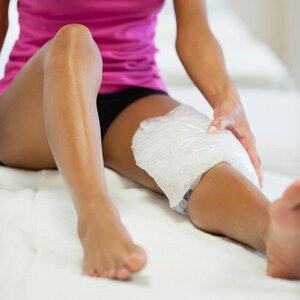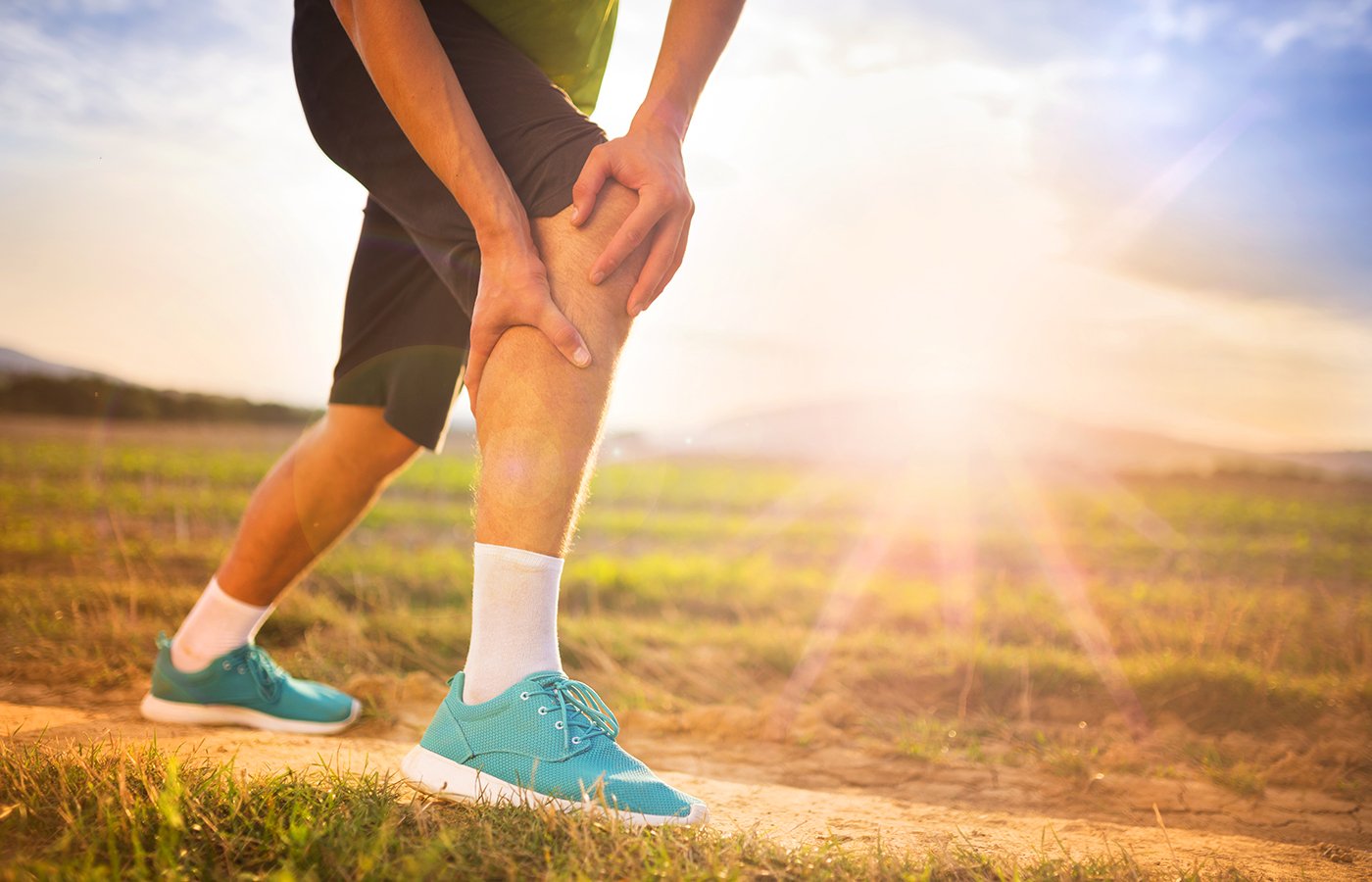There is a diverse variety of questions that arise when your body aches. Realize there are several causes and types of pain.
Beginning your treatment on the right step is critical towards getting yourself over the injury quicker. Not doing the correct initial medical first aid will result in you sometimes doubling or tripling your recovery time.
The very first thing you have to do is start with using ice on any new injury. You might hear something else from another professional; however, the American College of Sports Medicine has countless articles showing the benefits of using cold therapy.
Tips For Relieving Aches
Do Not Use Heat On Acute Injuries:
Using heat on new injuries can complicate your normal healing time by over two times. Consider the body is swelling, and if you use to heat it causes more swelling.
Consider a “Hot-air” balloon. Note the keyword, “Hot-air,” which is what your body does when it swells with inflammation.
Now if you put heat on an inflamed area, it swells more. It might feel temporarily better, but then complications set in and cause more damage. Injuries usually have two major components; one is swelling and the other is a spasm.
The ice is necessary to remove the swelling, which is performed for the first 48 hours, or until the swelling has diminished, then you can start the heat.
Caution When Using Ice:
 When using ice just use it for ten minutes. Leaving the ice on too long may result in the body feeling cold and it will respond by pushing blood into the area and may result in further swelling. then remove the cold and allow the body to return to normal temperature then repeat the ice treatment for another ten minutes.
When using ice just use it for ten minutes. Leaving the ice on too long may result in the body feeling cold and it will respond by pushing blood into the area and may result in further swelling. then remove the cold and allow the body to return to normal temperature then repeat the ice treatment for another ten minutes.
Repeat this process multiple times to obtain a process known as “pumping” that removes toxins and swelling from an area.
| DID YOU KNOW? |
| The first cold packs consisted of animal bladders loaded with ice and snow. They were used by ancient doctors to treat musculoskeletal injuries and to anesthetize a local region of the body prior to surgery. |
When To Call For Professional Help:
When you injure an area, one of the first things to do is stop. Trying to play through an injury becomes foolish since you can obviously add to a problem. Children are especially difficult to judge since they have underdeveloped brains and nerves.
A child can sometimes only sense pain as warmth or tickling. A rule of thumb is to have any sharp pain or numbness reviewed immediately by a professional.
Pain that lasts more than 2 days or is progressively getting worse should be reviewed by a professional.
Any pain associated with fever or change of vision, taste, smell, hearing, change of thinking, visible blood or other body fluid, or following a loss of consciousness, all should be followed up by a physician.
First Steps To Take:
- Immobilize the area
- Stop any activity
- Apply ice to the area, wrapped in a wet towel for ten minutes
- When available and not contraindicated, use an anti-inflammatory medication
- Keep area safe from other environmental factors
- Keep the area as clean as possible
After The Initial Injury:
When you wake up and you ache, the first thought of your day is what to do first. Consider the main causes of pain to help achieve some relief. No matter what your pain may involve, the lack of circulation is the primary cause of most pain.
Arthritis, general muscle pain, and other body aches can all be linked to the format of ongoing pain.
Obviously, the pain needs to be categorized and if it is sharp or causes painful body function, then using the following format wouldn’t be prudent and additional professional help must be sought.
Most conditions are associated with poor circulation, either to the nerve or other locally associated tissues.
Some movement usually helps relieve the pain since it forces improved circulation to the affected area. Take a moment to stretch or shower then stretch.
Wash Away Pain:
The first few steps may prove to be painful, but making it to the shower and using some hot water on the area is a great way to initiate some increased blood supply. Best followed after no visible swelling is noticed, the use of warm to hot water for a few minutes will benefit you greatly.
For some a bath is best and honestly, there are some mornings that I have no choice, but to crawl downstairs and slip into my hot tub.
The primary function of heat is to increase the blood supply to the main areas that are affected and the advantage of sitting in a bath or hot tub is that your blood is thinned out allowing it to penetrate those areas requiring more circulation.
Make exercises a regular part of your morning routine. Again, movement is the best way to improve nerve dysfunction.
Studies show that exercise of any sort will help to produce several chemicals like “substance P”, which provides natural pain reduction. Pathways of pain production can be slowed or halted with the use of simple exercises.
Current research is looking at long term pain and the massive effects it has on your cognitive pain patterns.
Constant pain is becoming a larger and larger problem, costing billions of dollars in lost workdays every year. This has provided significant research towards that topic in recent years.
Nutritional Assistance:
Eating right can help your body recover faster. Most lean proteins are necessary to help the body recover from tissue damage. Choosing foods with high in protein and low in fats will aid your body in its recovery.
Eating any non-flesh food raw will provide maximum absorption. Your protein intake should equal your carbohydrate intake to maximize absorption and give you enough energy for healing.
Other Helpful Foods Include:
- Onions: full of sulfates, necessary for the correct healing of connective tissue.
- Garlic: also full of sulfates, necessary for the healing of connective tissue.
- Cinnamon: natural antibiotic, keeps the blood clean and more able to carry nutrients.
- Ginger: has a natural ability to prevent the production of too much bad inflammation.
- B-2: Helps nerves to heal faster (found in dark green leave vegetables).
Minimize your intake of starches and fatty foods. They both prevent the intake of proper protein and other vital nutrients.
Avoid long term use of NSAIDs (Non-Steroidal Anti-inflammatory Drugs), such as Advil, Aleve, Nuprin, Motrin, and even just plain aspirin.
Every year over 16,000 people die from the side effects associated with these drugs). Using this drug will initially complicate the scarring process and eventually remove the protective lining of the stomach and the heart.
Consider that only about 150 more people die yearly from AIDS and that should put this whole thing into perspective for you rather quickly.
Always take NSAIDs with milk or something to eat to help protect the vital organs. This is why VIOXX and BETRA were removed from the market, they were just too dangerous to your heart and stomach.
In The Gym:
Most of the patients are surprised to see that I generally don’t restrict activities to them. I myself, have degenerative disc disease at every level of my lumbar spine.
Over time, I have learned first hand that if you don’t use it, you will lose it. Rather; “You are d@mned if you do, yet you are double d@mned if you don’t.”
Keep your weight down about 60%, work on contracting the muscle in both directions and also slow the movement down at first and then work towards a faster speed, before advancing in weight again.
While exercising you should never have more than 60% pain and that pain should never be sharp. Attempt to use shorter movements to control pain and also use alternative exercises that don’t seem to aggravate or elevate your pain levels.
Warm-up sufficiently along with the use of topical ointments has shown strong support from the literature. Make sure if you apply any topical ointment, that you keep the area covered to maintain heat.
Alternative Medical Approaches:
Currently, the Allopathic profession has not found a cure for Multiple Sclerosis, various forms of cancer, the common cold, Muscular Dystrophy, chronic migraine headaches, sinus problems, fibromyalgia, etc.
Point being, try alternative approaches to your medical problem, including naturopathic medicine, chiropractic medicine, acupuncture, massage, and others. All have significant literature to prove they work.
Your medical doctor likely has no idea about any of their treatments. Only recently has the medical schools used CAM (Community Alternative Medicine) programs to assist young doctors with their understanding of other forms of health care.
Give anything a couple of weeks to work before moving on. You have to learn to experiment with yourself to obtain results.
Conclusion
Living with chronic pain is very difficult and requires your attention to figure out what works and what doesn’t.
